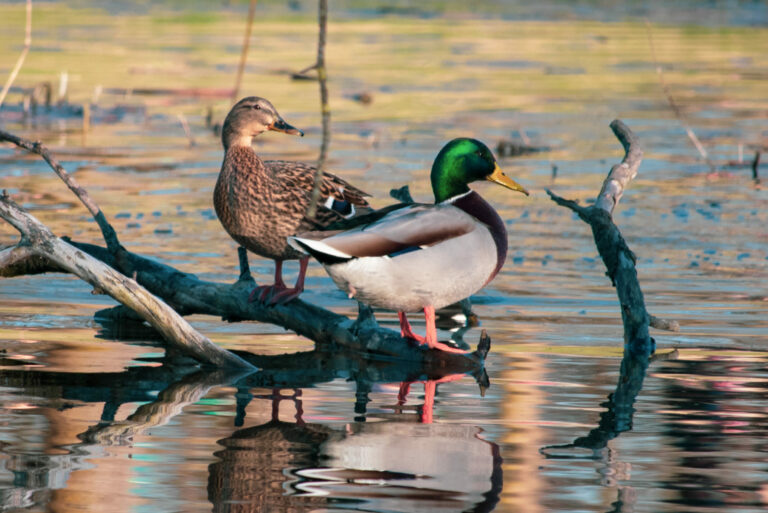Anas platyrhynchos

The mallard, measuring 51-62 cm in size, is one of the largest and most common dabbling ducks in Germany. It is distributed in Europe, Asia, and parts of North America. This species exhibits sexual dimorphism, as male ducks have more colorful plumage during the breeding season compared to females. The duck has a brownish coloration, while the drake features a green head with a white collar. Anas platyrhynchos inhabits both still and flowing waters such as rivers, ponds, lakes, and ditches (Schaefer 2018) and typically nests in their vicinity. Mating begins in spring, and the incubation period lasts about three weeks. The female is solely responsible for incubating the eggs and raising the ducklings.
Diet: The mallard feeds on smaller animals such as snails, worms, and insects, as well as plant matter such as grass, seeds, and fruits (Cramp 1977).
Conservation status: The conservation status of this species is “Least Concern.”
-
Cramp, S (1977)Handbook of the birds of Europe, the Middle East and North Africa, the birds of the western Palearctic: Ostrich to ducks. Oxford University Press
-
Schaefer, M (2018)Brohmer – Fauna von Deutschland. Ein Bestimmungsbuch unserer heimischen Tierwelt: Quelle & Meyer Verlag GmbH & Co.